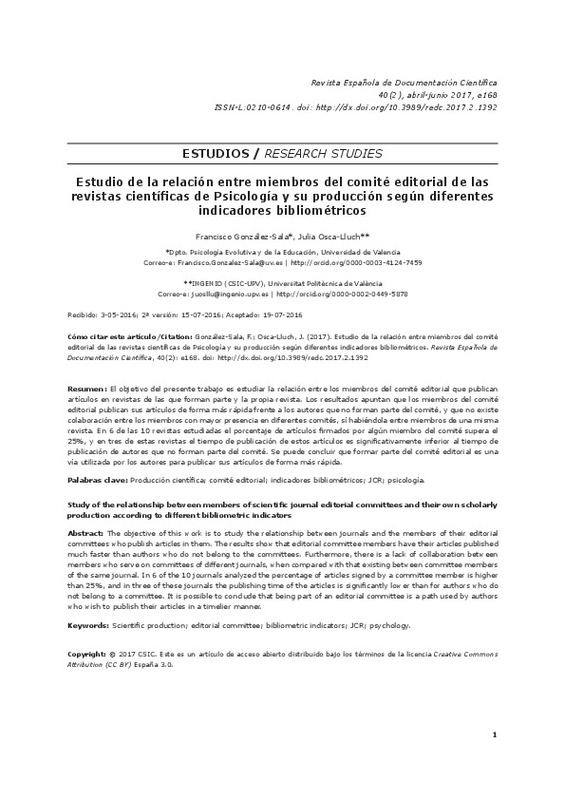Ayduk, Ö., & Kross, E. (2008). Enhancing the Pace of Recovery. Psychological Science, 19(3), 229-231. doi:10.1111/j.1467-9280.2008.02073.x
Baron, R. M., & Kenny, D. A. (1986). The moderator–mediator variable distinction in social psychological research: Conceptual, strategic, and statistical considerations. Journal of Personality and Social Psychology, 51(6), 1173-1182. doi:10.1037/0022-3514.51.6.1173
Bucci, W., & Freedman, N. (1981). The language of depression. Bulletin of the Menninger Clinic, 45, 334-358.
[+]
Ayduk, Ö., & Kross, E. (2008). Enhancing the Pace of Recovery. Psychological Science, 19(3), 229-231. doi:10.1111/j.1467-9280.2008.02073.x
Baron, R. M., & Kenny, D. A. (1986). The moderator–mediator variable distinction in social psychological research: Conceptual, strategic, and statistical considerations. Journal of Personality and Social Psychology, 51(6), 1173-1182. doi:10.1037/0022-3514.51.6.1173
Bucci, W., & Freedman, N. (1981). The language of depression. Bulletin of the Menninger Clinic, 45, 334-358.
Cheng, Y.-H., Kuan, F.-Y., Li, C.-I., & Ken, Y. (2010). A Comparison Between the Effect of Emotional Certainty and Uncertainty on Coping Strategies. Social Behavior and Personality: an international journal, 38(1), 53-60. doi:10.2224/sbp.2010-38.1.53
Cohen, J. (1988). Statistical power analysis for the behavioral sciences Lawrence Earlbaum Associates. Hillsdale, NJ, 20-26.
Geisler, F. C. M., & Weber, H. (2010). Harm that does not hurt: Humour in coping with self-threat. Motivation and Emotion, 34(4), 446-456. doi:10.1007/s11031-010-9185-6
Grant, F., & Hogg, M. A. (2012). Self-uncertainty, social identity prominence and group identification. Journal of Experimental Social Psychology, 48(2), 538-542. doi:10.1016/j.jesp.2011.11.006
Haas, I. J., & Cunningham, W. A. (2013). The Uncertainty Paradox: Perceived Threat Moderates the Effect of Uncertainty on Political Tolerance. Political Psychology, 35(2), 291-302. doi:10.1111/pops.12035
Hautzinger, M., & Bailer, M. (1993). Allgemeine Depressionsskala (ADS). Deutsche Form der Center for Epidemiologic Studies Depression Scale (CES-D). Beltz Text.
Hogg, M. A. (2007). Uncertainty–Identity Theory. Advances in Experimental Social Psychology Volume 39, 69-126. doi:10.1016/s0065-2601(06)39002-8
Ingram, R. E., Lumry, A. E., Cruet, D., & Sieber, W. (1987). Attentional processes in depressive disorders. Cognitive Therapy and Research, 11(3), 351-360. doi:10.1007/bf01186286
Kanfer, F., Reinecker, H. & Schmelzer, D. (2006). Selbstmanagement-Therapie. Ein Lehrbuch für die klinische Praxis. (4. durchgesehene Aufl.). Heidelberg: Springer Medizin Verlag.
Kross, E., & Ayduk, O. (2011). Making Meaning out of Negative Experiences by Self-Distancing. Current Directions in Psychological Science, 20(3), 187-191. doi:10.1177/0963721411408883
Metcalfe, J., & Mischel, W. (1999). A hot/cool-system analysis of delay of gratification: Dynamics of willpower. Psychological Review, 106(1), 3-19. doi:10.1037/0033-295x.106.1.3
Pfaltz, M. C., Wu, G. W. Y., Liu, G., Tankersley, A. P., Stilley, A. M., Plichta, M. M., & McNally, R. J. (2017). Cognitive and emotional processing of pleasant and unpleasant experiences in major depression: A matter of vantage point? Journal of Behavior Therapy and Experimental Psychiatry, 54, 254-262. doi:10.1016/j.jbtep.2016.09.001
Pyszczynski, T., & Greenberg, J. (1987). Self-regulatory perseveration and the depressive self-focusing style: A self-awareness theory of reactive depression. Psychological Bulletin, 102(1), 122-138. doi:10.1037/0033-2909.102.1.122
Rude, S., Gortner, E.-M., & Pennebaker, J. (2004). Language use of depressed and depression-vulnerable college students. Cognition & Emotion, 18(8), 1121-1133. doi:10.1080/02699930441000030
Shihata, S., McEvoy, P. M., Mullan, B. A., & Carleton, R. N. (2016). Intolerance of uncertainty in emotional disorders: What uncertainties remain? Journal of Anxiety Disorders, 41, 115-124. doi:10.1016/j.janxdis.2016.05.001
Smith, T. W., & Greenberg, J. (1981). Depression and self-focused attention. Motivation and Emotion, 5(4), 323-331. doi:10.1007/bf00992551
Trope, Y., & Liberman, N. (2010). Construal-level theory of psychological distance. Psychological Review, 117(2), 440-463. doi:10.1037/a0018963
Van den Bos, K. (2001). Uncertainty management: The influence of uncertainty salience on reactions to perceived procedural fairness. Journal of Personality and Social Psychology, 80(6), 931-941. doi:10.1037/0022-3514.80.6.931
[-]








